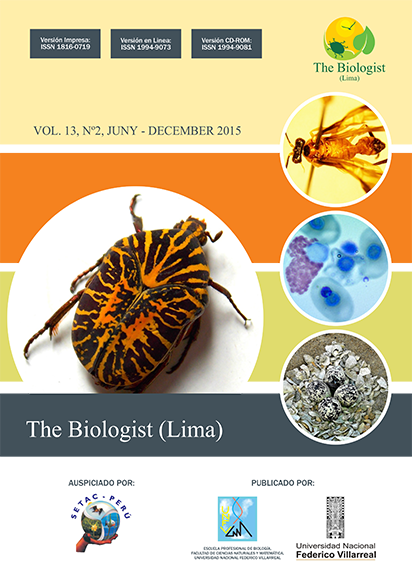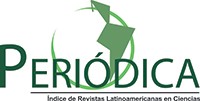MORPHOMETRIC STUDY IN A HEPATOPROTECTION MODEL WITH THREE MEDICINAL PLANTS
DOI:
https://doi.org/10.24039/rtb20151321563Keywords:
liver protection model, medicinal plants, morphometry, toxicAbstract
Morphometry is useful for the investigation in diverse specialties, including histology. An analytical study was carried out in the University of Medical Sciences of Villa Clara, to describe the morphometric modifications of the liver after the administration of extracts of Allium sativum L., Ocimum basilicum L, and Mentha x piperita L. in a hepatoprotection model before acute toxicity was induced by paracetamol. Groups of animals that received doses of 200 and 400 mg·kg-1 of weight of the aqueous extracts of the plants were evaluated with a hepatic damage group and another control group without treatment. The study was carried out in liver samples fixed in 10% neutral formol. The imaging was performed with a Canon digital camera coupled to an Optech binocular microscope (objective 40X), using the morphometric system ImageJ. The hepatocytes of the three zones of the hepatic lobes of Rappaport were studied. There were not significant morphometric alterations among the groups, although there existed variations among some analyzed variables. The nucleus area / cytoplasm area remained within normal limits and no differences in the number of sinusoides were number. The groups with the doses of 400 of O. basilicum and 200 of A. sativum presented the morphometric values of greatest similarity to the control group without treatment; it coincides with those attributed with a greater liver protective effect. It is recommended to use hepatotoxicity models that evaluate the morphometric alterations that occur 5 days from the exposure to the toxin.
Downloads
Downloads
Published
How to Cite
Issue
Section
License

This work is licensed under a Creative Commons Attribution-NonCommercial-NoDerivatives 4.0 International License.
Objeto: El AUTOR-CEDENTE transfiere de manera TOTAL Y SIN LIMITACIÓN alguna al CESIONARIO (Revista The Biologist (Lima)) los derechos patrimoniales que le corresponden sobre sus obras por el tiempo que establezca la ley internacional. En virtud de lo anterior, se entiende que el CESIONARIO adquiere el derecho de reproducción en todas sus modalidades, incluso para inclusión audiovisual; el derecho de transformación o adaptación, comunicación pública, traducción, distribución y, en general, cualquier tipo de explotación que de las obras se pueda realizar por cualquier medio conocido o por conocer en el territorio nacional o internacional.
Remuneración: La cesión de los derechos patrimoniales de autor que mediante este contrato se hace será a título gratuito.
Condiciones y legitimidad de los derechos: El AUTOR-CEDENTE garantiza que es propietario integral de los derechos de explotación de la(s) obra(s) y en consecuencia garantiza que puede contratar y transferir los derechos aquí cedidos sin ningún tipo de limitación por no tener ningún tipo de gravamen, limitación o disposición. En todo caso, responderá por cualquier reclamo que en materia de derecho de autor se pueda presentar, exonerando de cualquier responsabilidad al CESIONARIO.
Licencia de acceso abierto: El AUTOR-CEDENTE autoriza que manuscrito publicado en la Revista Científica The Biologist (Lima) (versión Impresa ISSN 1816-0719, versión en línea ISSN 1994-9073) permanece disponible para su consulta pública en el sitio web http://revistas.unfv.edu.pe/index.php/rtb/index y en los diferentes sistemas de indexación y bases de datos en las que la revista tiene visibilidad, bajo la licencia Creative Commons, en la modalidad Reconocimiento-No comercial- Sin Trabajos derivados –aprobada en Perú, y por lo tanto son de acceso abierto. De ahí que los autores dan, sin derecho a retribución económica, a la Escuela Profesional de Biología, Facultad de Ciencias Naturales y Matemática de la Universidad Nacional Federico Villarreal (EPB - FCCNM - UNFV), los derechos de autor para la edición y reproducción a través de diferentes medios de difusión.









































